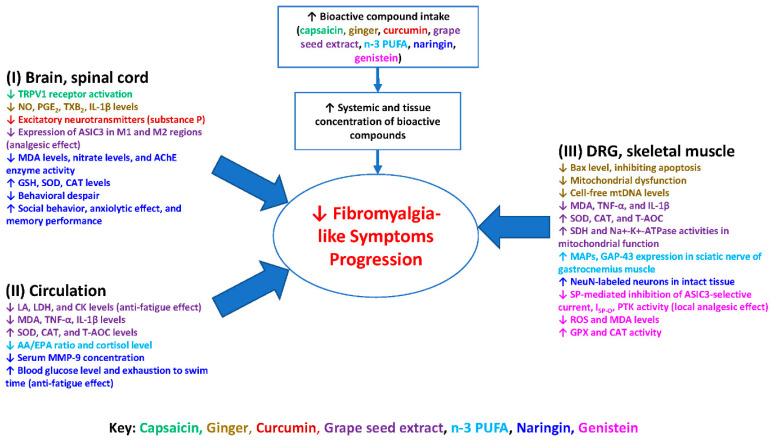Figure 1.
Diagram illustrates the potential actions of the bioactive compounds capsaicin, ginger, curcumin, grape seed extract, n-3 PUFA, naringin, and genistein on fibromyalgia-like symptoms. These compounds not only result in the production of pro-inflammatory cytokines, lipid peroxidation, and oxidative stress, but also result in upregulating antioxidant enzymes capacities in the nervous system, skeletal muscles, and circulatory system. The consequence is mitigation of the progression of fibromyalgia-like symptoms. Abbreviations: AA/EPA, arachidonic acid/eicosapentaenoic acid; CAT, catalase; CK, creatine kinase; CNS, central nervous system; DRG, dorsal root ganglion; GSH, glutathione; IL-1β, interleukin-1β; LA, lactic acid; LDH, lactate dehydrogenase; MAPs, muscle action potentials; MDA, malondialdehyde; MMP-9, matrix metalloproteinase-9; NO, nitric oxide; n-3 PUFA, n-3 polyunsaturated fatty acids; PGE2, prostaglandin E2; PNS, peripheral nervous system; ROS, reactive oxygen species; SDH, succinate dehydrogenase; SOD, superoxide dismutase; T-AOC, total antioxidant capacity; TNF-α, tumor necrosis factor-α; TXB2, thromboxane B2.

